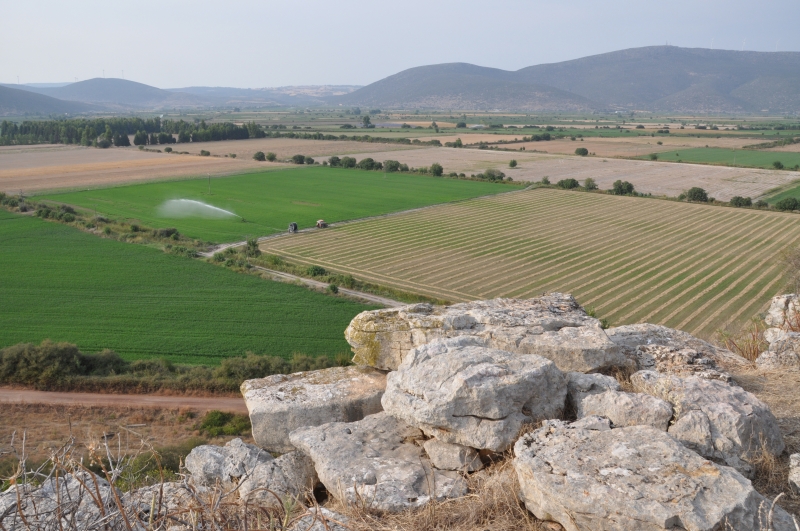
The plain of the ancient Copais lake seen from the walls of Gla, which then overlooked it like an isle. Photo F.Polacco
A journey in Boeotia, the land of Pindar, Dionysus, Heracles, and the Muses. Few tourists frequent this plain, between Athens and Delphi. Yet, every two or three miles, you can spot the remains of a once powerful polis, a sacred temple, a legendary fortress
I look around the village's deserted square without much conviction. Several times in the past few weeks, I found myself having to forgo a hike because of the wild, neglected state of the remains of lost cities, unfairly regarded as less important – besieged by thorny brambles and twisted bushes, made inaccessible by no longer frequented, almost erased trails; choked by thorns, collapsing rocks, and dust. No indication to find them. As if that were not enough, sometimes even some of the inhabitants of the area seemed to ignore the treasures of the past that lay next to them.
It's been about ten years since I was in Boeotia: in the land of Pindar and Thebes, Dionysus and Heracles, Oedipus, Epaminondas, and the Muses. This small region of central Greece is overlooked by less informed travellers, who flock to two more attractive destinations nearby – Athens and Delphi – among which the Boeotian plain stretches. Yet here, every two or three miles, you can spot the remains of a once powerful polis or a semi-legendary fortress, a revered shrine or a sacred grove; a mountain, lake, or god-river whose amenity was celebrated by poets.
This time I chose to visit this small town, Akrèfnio, because it is one of those that I had overlooked in my past itinerary.
It is late morning, very hot already, a slightly hazy atmosphere. However, the trip seems to take a better turn than usual. The first passer-by I ask “can you visit the Acropolis?” smiles. He points me to a hill overlooking the town and assures me that yes, the ascent is easy, I will not get lost, and the area is well maintained. “If you want – he adds – here in the village we have a writer who studies the archaeology of the area, he could be of help”.
Of course I want. The meeting is easier than expected, in fact immediate: the writer-archaeologist is a few steps away, sitting in the typical open-air kafenio, shaded by thick plane trees, that you never fail to find even in the smallest Greek village. He is old, but appears in great shape while he chats and drinks coffee with some friends. We introduce ourselves. I find out right away that Kostas, that's his name, is not an archaeologist nor an intellectual by profession; he has worked all his life in the then national telephone company, basically he is a phone technician. But, he tells me, he has just finished writing a book about the monumental remains of the area – the ancient city of Akraìphia and beyond. This morning he is free and, if I want, he will accompany me on the acropolis himself.
The rest of the conversation – as Kostas, with agile, confident steps, shows me the way down the path that climbs on the classic rock – tells me how lucky I was. My new Greek friend is one of those self-educated, passionate, and sincere admirers of local antiquities that you can still happen to meet in small Hellenic towns, almost always blessed with a glorious past. But that's not everything: he is the founder and president of a local syllogos.
Hardly anyone who has not explored each and every inch of Greece knows what a syllogos is and what purpose it can serve. Formally, it is a cultural association founded by the local people for the purpose of re-evaluating, curating, and raising awareness of the attractions of the area. It typically organizes dance or theatre events, conferences, seminars, festivals, and tours. The most striking thing is that in every village – no matter how tiny – there is always a syllogos, but also that in Greece there are so many people with the will, time, and energy to join and make it happen.
But I am more than lucky, because Akrefnio's syllogos is particularly active and efficient, and goes beyond the organisation of cultural events. Kostas reveals this to me when, a little tired from the climb, we pause to catch our breath and admire the view under a wooden kiosk of seemingly recent set-up, on a strategic cliff of the acropolis. The whole walk was really easy, just as promised: the trails are visible and well maintained, the areas of interest cleaned of spontaneous vegetation, walls and entrances of the ancient fortress freed from damaging roots. Well, he says, the syllogos did all of this.
“Not the municipality?”, I ask. “No. The municipality of Akrefnio was abolished a few years ago. We were merged with Orchomenos because of the cuts forced by the economic crisis. Of course, the fortress lay abandoned even before that; but now that we are no longer an autonomous municipality we get even less attention from public authorities”. “They must have helped with some funding though?”. “No funding; when there was the municipality, at the most they would lend a labourer if one was a free for a day or two. Basically we had to do it all by ourselves”.
Kostas is not exaggerating. I will get confirmation some time later, leafing calmly through the issues of the monthly magazine published by the “Syllogos of Akrefnioti everywhere” (or so the title could be translated – the reference is to the many emigrants scattered around the globe). The collection was given to me by Kostas after the amazing day I spent with him. In an internal page, I read the list of the ten members, plus four “Albanian workers”, who carried out the site's clean-up on their own. But I also find – this is the most thought-provoking reading – the letter the association, together with another “Akrefnio Cultural Syllogos” sent to implore all competent authorities (the Ministry of Culture, the Ministry of Tourism, and the Region of Boeotia) to support local associations with some funding, even if they were not able to take care of the preservation of the site themselves. Letters of rejection follow one after the other – your intent is good and commendable, they say more or less, but we no longer have any money, staff, or means. The Akrefnioti were not discouraged. A title in the same issue of the magazine reads, with some pride: “Borùme ke mòni emìs!”. “We can do it on our own!”.
No sooner said than done: as I find out, not only was the acropolis rearranged and made accessible by the public, but two archaeological sites in the surrounding area returned to live. I had visited them – well, I had tried to – ten years ago. They are much better known than Akrefnio, especially among history and art buffs. I am talking about the former island of Gla and the Oracle of Apollo of Ptoion. I cannot believe my own ears when Kostas tells me that everything is back in place there too, the small forest of gnarled shrubs and small spontaneous trees was trimmed, the ancient remains cleaned and brought to light – that both sites are, in short, finally accessible.
I remember vividly my first visit to Ptoion. In total solitude, I arrived on a hairpin mountain road frequented by very few vehicles (the road was white, I think), then climbed up and down the steep cliff where the sanctuary once stood, barely identifying terraces, buttresses, vague foundations of what must have been, in the splendour of twenty-six centuries ago, a place full of sacred buildings and welcome, of pilgrims and statues, resonant of ceremonies, songs, sacrifices; even athletic contests – as ancient authors recall – were held there in honour of the god, such as those of Olympia and Corinth. Apollo released his prophecies in the vicinity of a spring, in competition with not distant Delphi. I still remember the excitement, and at the same time the sadness, of that distant morning spent in absolute silence, only broken by the bleating coming from a corral on the ruins.
This time, I arrive to Ptoion with Kostas, more or less at the same time I did ten years ago, but the impression is completely different: the remains are free from vegetable tangles and perfectly legible; here and there capitals, triglyphs, broken pieces of columns stand out in their whiteness, almost as arranged by a skilled hand in a casual setting. Only the silence has not changed, since we are still the only visitors. My companion, who organised and managed the works on a daily basis, shows me around wonderfully. I think back to the many archaic young men, the marble Kouroi found by archaeologists in the ruins of the sanctuary more than a century ago – they are still showcased, in their superb athletic vigour, in the halls of the Museums of Central Greece, including Athens (for a number of at least 120 statues!). I almost recognize, among these rough stones, warm under the afternoon sunlight, the same quiet, retained power, the supreme and serene fixity of gaze, the triumphant, aristocratic smile of those who had just won athletic competitions and received the crown by the priests of the god.
Neither of us has eaten, the sun has been going down for some time. The marvel and interest at finding myself in these places, so transformed, made me forget about time. I imagine that my guide is exhausted too, and I suggest a break, so he can go home to rest and refresh. I'll look for something to eat nearby. I do not want either of us to get exhausted and distracted to the next visit promised – to Gla. The appointment is scheduled at the perfect hour for summer trips in Greece – after six in the evening.
Those stranger to classical academic studies are unlikely to have heard of Gla. Yet, this is one of the most extraordinary places in all of Greece. It is a Mycenaean fortress, built over three thousand years ago, but at the same time it is an island. Or rather, it used to be an island. What is now the plain of Boeotia was once covered by a vast lake, the Copais. Famous for its eels, a delicacy for ancient Athenians. But since Greece has always had a hunger for arable land, even then inhabitants tried to dry it with the so-called “dams of the Minii” (an ancient, almost mythical people of the region), drainage canals that ended in katavòthres, a sort of holes discharging into the subsoil – partly natural, partly artificial.
From the top of the surrounding mountains, you can have an overall view of Gla, which stands out as inlaid on the fertile plain round (the final arrangement was accomplished by the English and French, in the nineteenth century); but what stands out when you approach from the bottom of the surrounding countryside is the ancient walls. Still high, Cyclopean, in large square blocks like those of Mycenae and Tiryns. Only Gla, also equipped with monumental gates and a Mycenaean palace (anaktoron) recognizable in the foundations, is visited by virtually no one. Kostas leads me to the fortress through the ancient...twentieth century entrance: as revealed by a little cabin in the wood – the ticket office – abandoned for a few decades, since the last century, when Gla had visitors (“the ticket office goes back to the time of the Colonels”, bitterly says Kostas – that is, forty years ago).
During my first visit I had not been able to go far beyond the gates, stopped by the small jungle of brambles. Now, however, with my amazing guide, I walk all around the fortress. We follow the route of the royal rooms (here reigned a king who was colleague to Ulysses of Ithaca and Menelaus of Sparta), identify what likely used to be warehouses, patios, porches. The planimetric map of this Mycenaean jewel develops under my feet and is free to the eye. The sun, mild in its decline, and a breeze rising from the plain give off a feeling of well-being, almost of intellectual mastery, similar to that which pervades archaeologists when they realize they finally hold the key to a city hitherto lost in their hand.
Even in ancient times, like today, Greece is a country almost devoid of mineral resources and raw materials – it is a country made of sun, sea, and rock, with a few, scarce arable plains. So what makes it great, what made it even the cradle of European civilization, is its inhabitants – with their talent, their creativity, their tenacity. Now, the past greatness has become, like in a metamorphic process, a possibly extraordinary field – one that does not pollute, is inexhaustible, and can never be off-shored. Perhaps the small, neglected Greek syllogi have found the right way?
















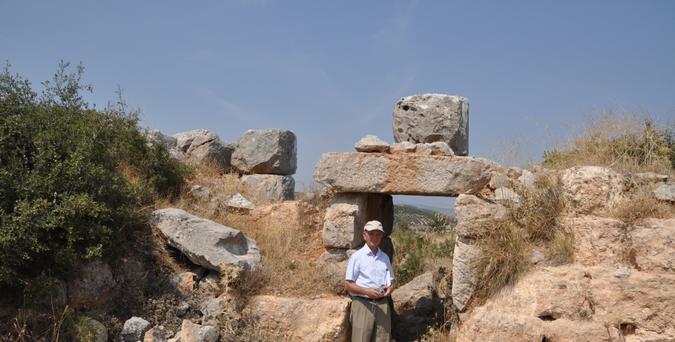
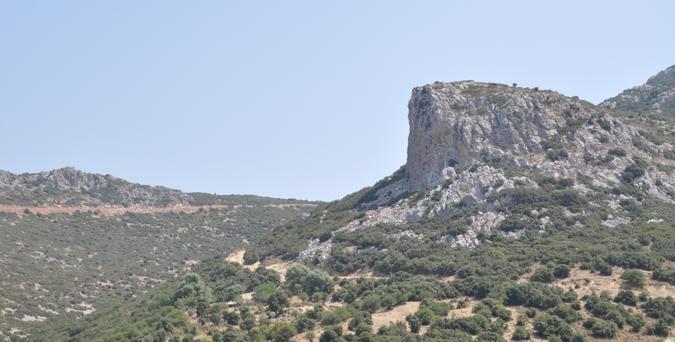
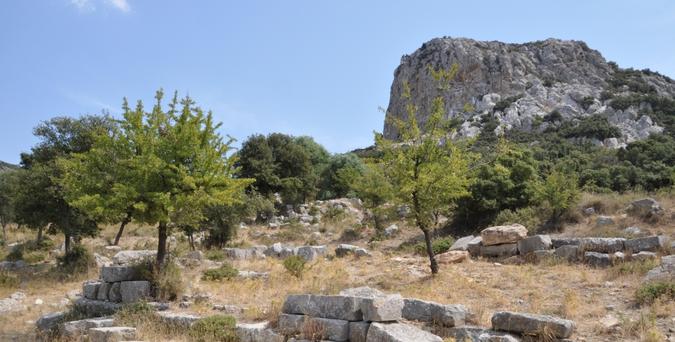
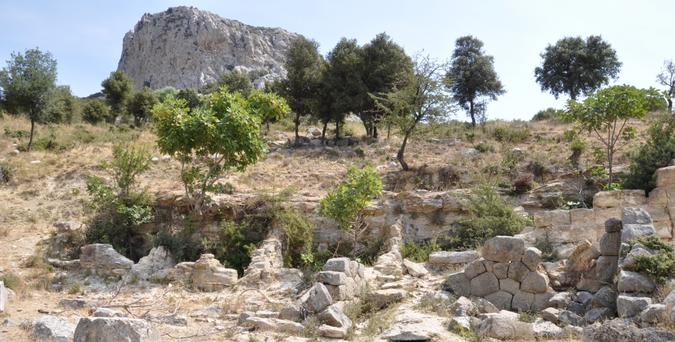
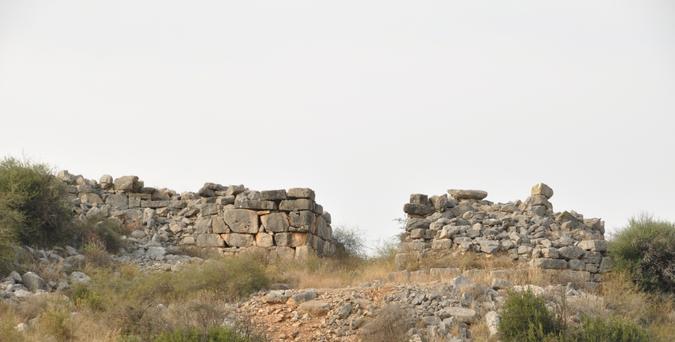
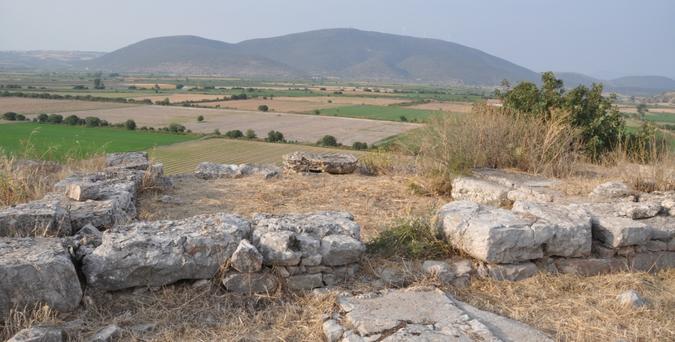
 To Top
To Top